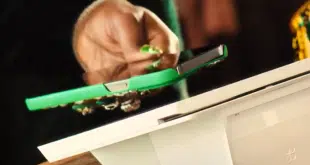The Internet of Things has always had a gee-whiz factor, but unshowy sectors such as utilities, insurance, and purchases for business and household essentials are leading its payments growth.
The Internet of Things seemed to be big even before Silicon Valley techies and their marketing-side allies started using the term “Internet of Things.”
Back around 2003, which Cisco Systems Inc. pegs as the inception of the IoT, the network had an estimated 500 million connected devices. Of course, at that time most of those devices were PCs, laptops, earlier generations of cell phones, and a limited number of other devices that could plug into the Internet.
Fast forward to 2020. Everything from wearables to TVs and smart speakers, refrigerators to electric toothbrushes, utility meters to motor vehicles, and all kinds of other stuff is now connected to the Internet. Estimates of the IoT’s size vary widely depending on fluid definitions of what counts, but they’re all high.
United Kingdom-based Juniper Research pegged the network at 35.7 billion devices globally last year, and predicts it will grow to 83 billion by 2024, with about 40% of them in North America.
Another estimate comes from San Jose, Calif.-based Cisco, which was founded in 1984 and provides Internet Protocol networking equipment and related products. By Cisco’s count, the IoT is now up to 50.1 billion devices.
“The numbers are all over the place,” says David Nelyubin, a research analyst at Mercator Advisory Group Inc., a Marlborough, Mass.-based research and consulting firm.
The Invisible IoT
This sprawling if indefinite network is not all what many consumers think it is, such as the headline-grabbing refrigerator Samsung and Mastercard touted four years ago that could compile a grocery list based on your past preferences, submit the order to your favorite supermarket, and facilitate payment.
Instead, the IoT is quietly reshaping business and industrial processes in ways invisible to the average consumer. “The industrial sector, including manufacturing, retail, and agriculture, will account for over 70% of all IoT connections by 2024,” a recent Juniper report says.
The IoT, however, is indeed on its way to becoming a major new source of payment volume from consumers as well as businesses. But just what percentage of IoT devices is payment-enabled today is yet another mystery.
“That’s a really tough question,” says Nelyubin. “If I was to estimate it would definitely be single digits.”
A closely related question is, just what is an IoT payment? A 2019 consumer study by Javelin Strategy & Research found that 13% of consumers are making payments on IoT devices such as smart speakers from Amazon.com Inc. or Google, according to Krista Tedder, head of fraud and security at the Pleasanton, Calif.-based firm.
But IoT devices can be used to make a variety of non-IoT payments. Take, for example, Apple’s Watch, a smart watch closely integrated with the Apple Pay mobile-payments service. It can be used for point-of-sale, e-commerce, and other purchases, notes Tim Sloane, vice president of payments innovation at Mercator.
“It’s your traditional brick in-store contactless transaction. It also can be used for a recurring transaction—you can sign up for The New York Times. That is not an IoT payment, it is a recurring transaction,” he says.
It’s the Data
So what makes an IoT payment different from other common electronic payments? It’s all about the data. According to a Mercator definition boiled down by Digital Transactions, an IoT payment is a real-time, data-driven transaction that does not involve the buyer making a buying decision. The payment, which is not linked to any particular channel such as a card, is pre-authorized and automated, based on feedback from a sensor or other automated data source.
If that sounds a tad academic, Mercator’s Nelyubin points to several real-world use cases of IoT payments:
Auto insurance So-called “telematics” devices plugged into cars with the owner’s permission can track a driver’s every move—speed, braking patterns, throttle positions, and so on, and essentially teach the person behind the wheel to be a better driver. Go over the speed limit and the device beeps, for example. The data generated lets the insurance company raise or lower premiums, which are paid monthly like a subscription, based on the driver’s risk profile. “Fourteen percent of revenue of the top insurance companies is coming from an IoT device,” says Nelyubin.
Printer ink Some 27% of printers from the major manufacturers sold in the U.S. are now Internet-connected models that can monitor ink levels and automatically order and pay for new cartridges when ink is running low. Many make that possible through application programming interfaces available through Amazon’s Amazon Dash Replenishment service. Nearly 7% of the manufacturers’ revenues now come from such IoT orders, Nelyubin says.
Electricity bills More than half of Americans now live in dwellings with a two-way “smart meter” that not only removes the need for utility workers to manually read meters, but also enables residents to adjust their electricity usage based on real-time data—and make automated payments. Mercator estimates 35% of U.S. residential electricity payments are now IoT-based.
Toothbrushes Also employing Amazon Dash, electric toothbrushes from major manufacturers such as Philips and Oral-B can assess the condition of the brush head and automate the ordering of new ones.
‘The Next Growth Area’
Fraud always follows payment volume, of course. In February, Milpitas, Calif.-based security technology vendor SonicWall Inc. released a cyber-threat report stating that malware directed at IoT devices is becoming more common. SonicWall pegged the volume of IoT malware attacks in 2019 at 34.3 million.
“But with a deluge of new IoT devices connecting each day, increases in IoT malware attacks should not only be expected, but planned for,” the report says.
Yet earlier fears about the IoT bringing in hordes of manufacturers and software developers inexperienced in protecting payment data haven’t played out, at least not yet. Smart speakers and other IoT devices from well-known manufacturers and Internet companies such as Amazon use tokenization and encryption, according to Javelin’s Tedder.
“From an IoT perspective, we really aren’t seeing a lot of fraud,” she says. “When it comes to mobile devices, it’s a different story.”
Another issue with the IoT and all its data is consumer privacy. “The question simply becomes as we open up our lives to these devices that make our lives easier, what are we giving up in the way of privacy,” wonders Mercator’s Sloane. He confesses he doesn’t have the answer.
Still, while Sloane says the IoT has a long way to go, “we think it’s going to be the next growth area where it creates frictionless lives for consumers.”





